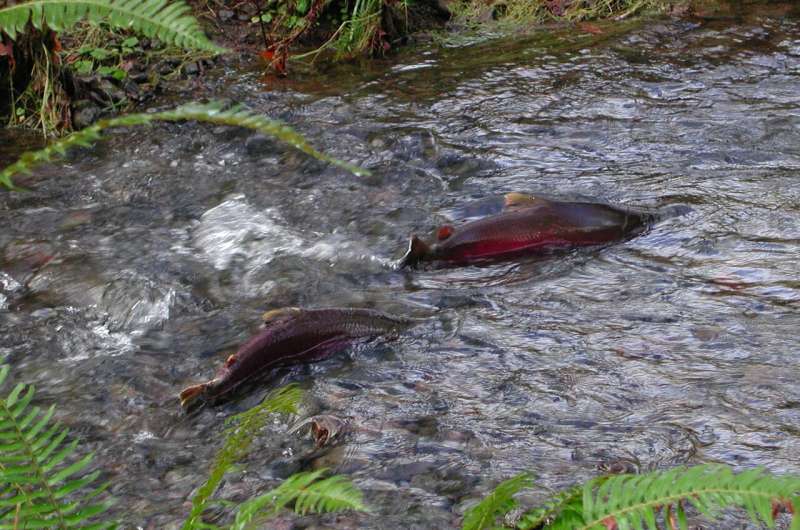Substance derived from tire debris is toxic to two trout species, not just coho salmon

Every time it rains, fish living downstream of storm drains are exposed to pollutants, including the tire-derived compound 6PPD-quinone, in the runoff. Recently, this substance has been linked to massive die-offs of coho salmon across the U.S. West Coast. Now, researchers in ACS' Environmental Science & Technology Letters report that exposure to 6PPD-quinone at environmentally relevant levels can also be deadly for rainbow and brook trout, though not for Arctic char or white sturgeon.
Rubber tires are fortified with protectants, such as N-(1,3-dimethylbutyl)-N'-phenyl-p-phenylenediamine or simply 6PPD, so they can be safely driven for a long time. However, as the treads wear down and pieces flake off over time, small rubber particles scatter across roads. There, they react with oxidants such as ozone in the air, converting 6PPD to 6PPD-quinone, which washes into waterways along with the source tire particles in stormwater runoff. Previous studies reported that exposure to small amounts of 6PPD-quinone is toxic to coho salmon—a popular fish among recreational fishers and an environmentally important species—and likely caused the phenomenon in urban streams called urban runoff mortality syndrome. Conversely, another study indicated that zebrafish and Japanese medaka can withstand even very high amounts of 6PPD-quinone. So, Markus Brinkmann, Markus Hecker, Steve Wiseman and colleagues wanted to see whether this contaminant poses a risk to a broader range of commercially, culturally and ecologically important fish species.
The researchers exposed juvenile brook trout, rainbow trout, Arctic char and white sturgeon to varying levels of 6PPD-quinone. They found that even small concentrations, such as those regularly occurring in surface waters after stormwater runoff events, were fatal to brook and rainbow trout. For both trout species, the researchers observed an increased blood glucose level after 6PPD-quinone exposure, suggesting it affected the fish's energy metabolism pathways. However, none of the Arctic char and white sturgeon died after four days of exposure to a high level of the contaminant that was similar to the maximum amount previously observed in stormwater runoff. The results indicate mortality from exposure to 6PPD-quinone varies among fish species, but for animals that don't die, possible non-lethal effects could be occurring and need further examination, the team says.
More information: Markus Brinkmann et al, Acute Toxicity of the Tire Rubber-Derived Chemical 6PPD-quinone to Four Fishes of Commercial, Cultural, and Ecological Importance, Environmental Science & Technology Letters (2022). DOI: 10.1021/acs.estlett.2c00050
Kyoshiro Hiki et al, Acute Toxicity of a Tire Rubber-Derived Chemical, 6PPD Quinone, to Freshwater Fish and Crustacean Species, Environmental Science & Technology Letters (2021). DOI: 10.1021/acs.estlett.1c00453
Journal information: Environmental Science & Technology Letters
Provided by American Chemical Society


















